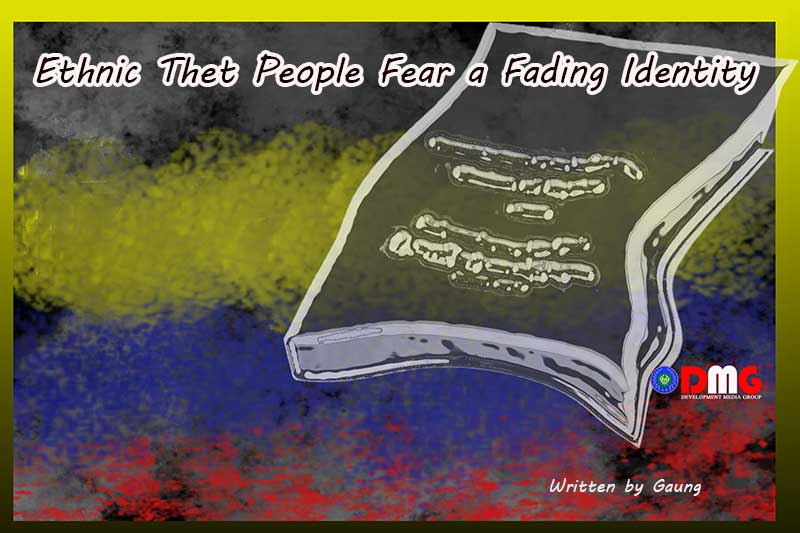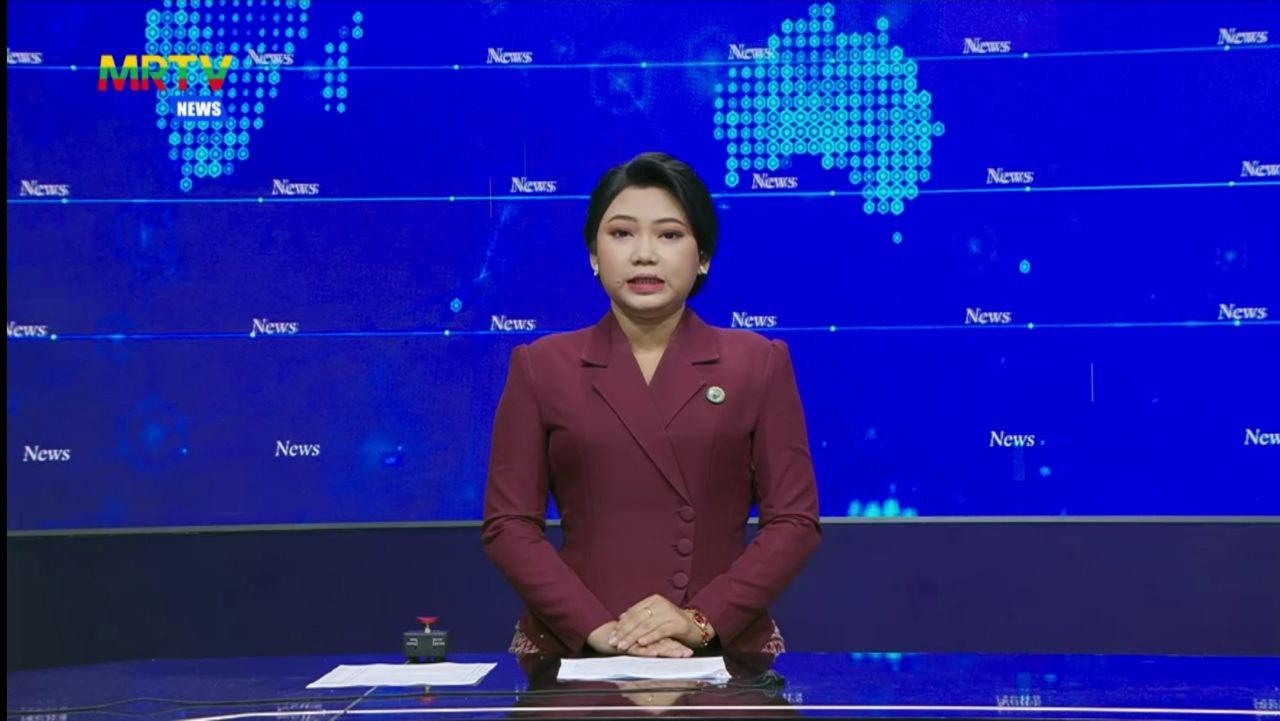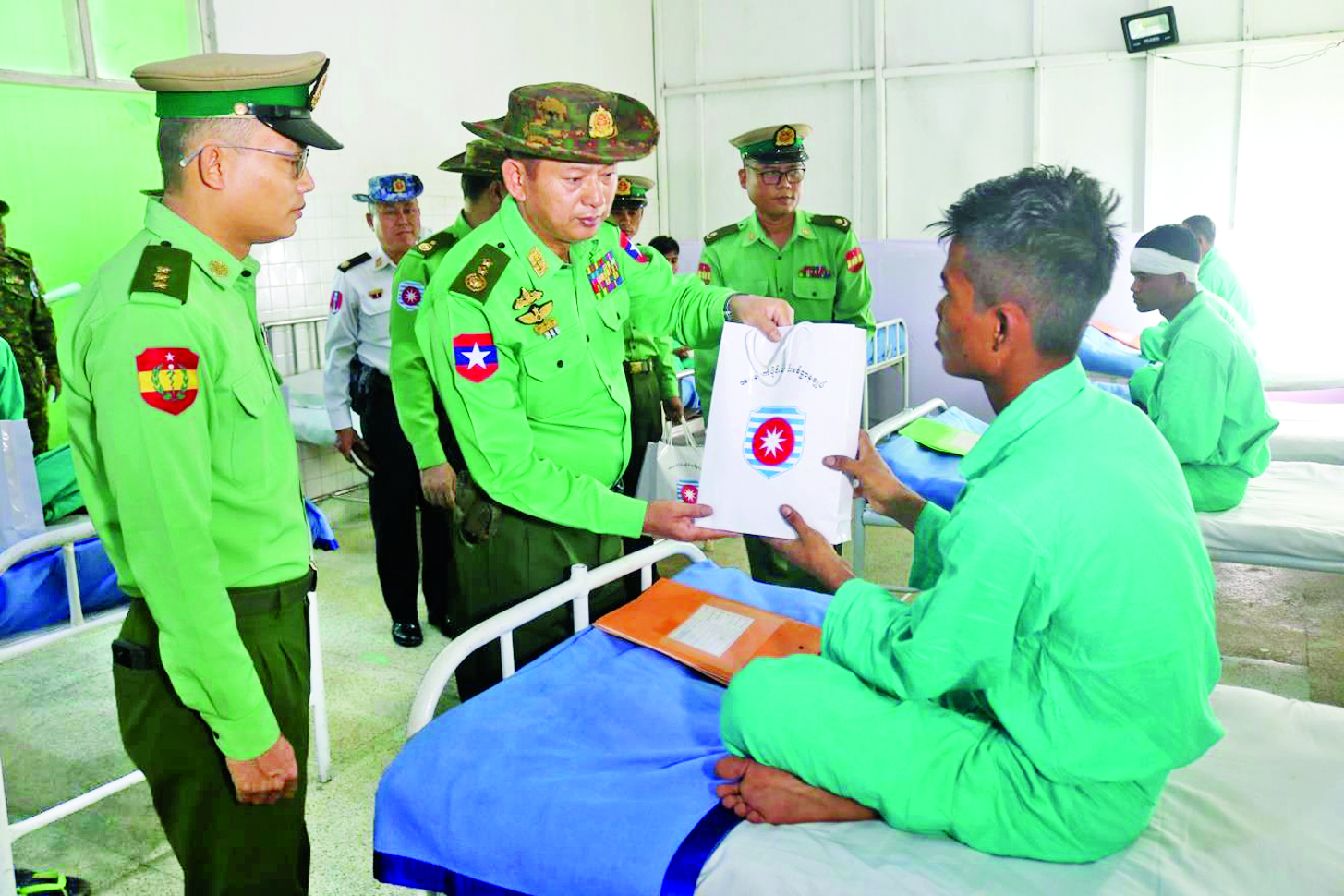- Junta unable to hold elections in dozens of wards and village-tracts in Sittwe, Kyaukphyu
- Fighting escalates between Myanmar military, Arakan Army in Ayeyarwady Region
- Regime steps up civilian arrests in Sittwe
- ULA safeguards Mrauk-U's ancient heritage
- Arakan on the Edge: What the DMG Landmine Impact Report Reveals About Myanmar's Deepening Humanitarian Crisis
Ethnic Thet People Fear a Fading Identity
A large segment of the Thet population resides in remote areas with very limited access to public services as well as opportunities to improve their living standards. To make matters worse, many from Maungdaw, who mainly have engaged in farming for their livelihoods, were forced to flee after violence broke out in the border town. The displaced have since reached different parts of the country, scattering among big societies of other ethnic people.
27 Jun 2022

Written by Gaung
At the foot of the majestic Mayu mountain range overlooking the Bay of Bengal, there lies a picturesque village known as Magyigone, a home of the Thet tribe in Arakan State’s Maungdaw Township.
One’s first impression of the village is that it is a haven of peace and tranquility. But residents have serious worries.
“We are faced with many challenges and are almost extinct,” said Thet ethnic leader and former lawmaker U Hla Tun Kyaw.
With fertile soil and substantial natural resources, plus an outlet to the ocean, Arakan State is home to at least seven Arakanese tribes who have lived through thick and thin across centuries of history.
Among those including Arakanese, Khami, Mro, Thet, Daingnet, Maramagyi and Kaman, the Thet tribe is perhaps the smallest population, with just a few thousands. Traditionally Buddhists, Thet people have their own language, literature, culture and customs.
According to data compiled by tribal leaders, there are an estimated 1,200 Thet people spread across nine villages along the border in Maungdaw. They also live in seven villages and wards in Buthidaung and Rathedaung townships.
Smaller populations also reside in rural areas of Sittwe and Ponnagyun townships, with not more than a few dozen households in Sittwe, Ponnagyun, Mrauk-U and Ann townships.
There are also some 130 households of Thet people who are said to work at factories in South Dagon Township, in the commercial capital Yangon. There are a little over 10 households in the administrative capital, Naypyidaw, the numbers say.
“We took a census; our population is only between 3,000 and 4,000 in Arakan State, and nearly 6,000 nationwide,” said U Hla Tun Kyaw.
Populations on the Move
A large segment of the Thet population resides in remote areas with very limited access to public services as well as opportunities to improve their living standards. To make matters worse, many from Maungdaw, who mainly have engaged in farming for their livelihoods, were forced to flee after violence broke out in the border town. The displaced have since reached different parts of the country, scattering among big societies of other ethnic people.
Magyigone village is located along the Buthidaung-Maungdaw road, some four miles from Maungdaw town, and close to Agnumaw road in southern Maungdaw. The village tallies about 250 households, and is considered the biggest home of the Thet tribe.
Established in 1971, the village also known as 4-Mile village (as it is four miles far from Maungdaw town) is 51 years old now, and as such is counted as the oldest Thet village.
Thet people fled from Mount Wai Lar in 1958-59 due to a Mujahideen insurgency at the time, and scattered across Arakan State.
Some returned and settled in Magyigone in 1971, eking out a meagre living working at state-owned teak plantations as daily wage earners. The farmers who had no farms at their new place made do with broken rice for their meals as they struggled to build a village out of nothing.
U Hla Tun Kyaw and his family moved to Magyigone from Taman Thar village in northern Maungdaw. His neighbours also left Taman Thar for greener pastures.
The population of Magyigone village increased with more Thet people from Mt. Wai Lar and other villages moving to the village after communal conflicts in 2012 and 2017.
“We had fears for our lives then because there were no security forces providing security for us at the village. So, we dared not work on our farms, and we had to move for our survival,” said Daw Kyar Ma Sein, who moved from Taman Thar village to Magyigone after the instability in Maungdaw in 2017.
Maungdaw Township has the largest population of Thet people, with over 1,200.
Before 2012, there were around 10 Thet villages with more than 2,000 people in Maungdaw. After a ethnic Thet teacher and his wife were killed in the communal violence that year, many Thet people living along the border fled out of fear.
After the Maungdaw violence of 2017, and following threats from the Arakan Rohingya Salvation Army and Rohingya Solidarity Organization, more Thet people left Maungdaw for Yangon, Ann, Ponnagyun and elsewhere.
Like many youths from Arakan State, hundreds of young Thet people have left their hometowns to work in Yangon, Mandalay, Naypyidaw and other urban centres, as well as foreign countries like Thailand, Malaysia and China. While in many cases these migrant workers and their families have benefitted from these jobs, the exodus comes at a cost for the tribe.
As an ethnic minority, the Thet people’s scattered and geographically mobile population poses a great challenge to their existence.
“With growing migration, it will be very difficult to reunify the tribe in the next 30 or 40 years, or in the time of the younger generation,” said ethnic Thet school headmaster U Oo Shwe.
An Ancient Coexistence
According to records from the days of the Arakan Kingdom, the Arakanese and Thet tribe have lived together for centuries. The first Thet tribe is said to have descended from the Chin foothills to the Kaladan River, where they cut down large bombax trees and set up farms in the remote northern parts of Maungdaw, establishing 12 villages near Mt. Wai Lar.
Population pressures persist, U Tun Hla Kyaw told DMG.
“To put it bluntly, the Thet tribe is gradually being overshadowed by other tribes, and oppressed,” he said. “As a result, the Thet tribe gradually moved away from other ethnic people. This means that the Thet tribe did not reach the urban areas but fled to the remote forested mountains and lost their way in history.”
The Thet tribe considers Mt. Wai Lar in northern Arakan State to be the original settlement of their ancestors.
“The Arakanese, Khami, Mro, Thet and Daingnet tribes have been living together in Arakan State since ancient times, and the Thet tribe have a special desire for peace and live in harmony with the environment,” said Ko Ingar Aung, an ethnic Khami man from Ponnagyun.
In the midst of many difficulties, Thet leaders are planning to prioritise education as the foundation of the younger generations. Educated youths are now able to celebrate Thet National Day for the first time, showcasing their traditional literature and dress.
At present, the number of Thet employees in departmental offices in Maungdaw Township is about 10 percent. Advocates of Thet representation in government say they want to increase that number.
Thet ethnic leaders believe that the future can only be sustained if the Thet tribe can form political parties and build durable, secure villages in areas with good transport links.
“The Arakanese are one of the most populous tribes, and other Arakanese tribes should be treated equally,” said Saw San Nyein Thu, chairwoman of the Rakhaing Women’s Initiative Organization. “I think we should all work together to ensure the wellbeing of all social life in Arakan State.”

















